Rabies is known to be a viral disease commonly found in dogs but has spread its territory to cats. Rabies in cats has become very common lately and has caused serious damage to the feline kingdom. It is a virus that disrupts the cat’s central nervous system, including the brain and the spinal cord.
On the whole, it is responsible for affecting the central nervous system of any mammal, but the main focus here is rabies in cats. This article will shed some light on the events that follow if your cat is diagnosed with rabies.
Origin of the Virus
The origin of the virus is a bite from another animal. The virus from the bite travels inside the body’s nerves until it reaches the brain and disrupts the proper functioning of the central nervous system. The central nervous system is responsible for the coordination and control of the body. For instance, in the United States alone, rabies in cats is much more common than rabies in dogs.
In this article, we will learn the ins and outs of rabies in cats, including its early signs, later symptoms, transmission, and treatment, how a cat gets rabies from other animals, and modes of transfer. The vaccination for rabies is now available in the market. If you don’t get rabies diagnosed in time, it could prove dangerous for your cat.
Learning About Rabies
To make a conscious effort to learn more about rabies, we would like to share the fact that, as of today, rabies in cats is rarely found globally. It is because of the vaccinations that have been developed for the cause and the measures taken to protect cats’ welfare.
As of 2017, there is a total of 7.6 percent decrease in rabies cases in cats. And to narrow the search down, rabies is rarely found in indoor cats because they are less exposed to rabid cats, which minimizes the risks. It is proven that if you leave rabies untreated for long, it can also prove to be fatal.

Vaccinations can prevent it, so it is your responsibility as a pet owner to get your cat vaccinated to avoid any such inconvenience when the time comes. As we move forward with this article, we will learn a lot more about rabies in cats.
Early Signs of Rabies in Cats
The early signs indicating that your pet cat has rabies include a sudden change in its behavior. Cats are playful animals looking for attention and engaging with anyone familiar and friendly with them. But when you observe your cat, who has now become distant and less playful, it means something is up.
Normally, an extroverted cat would chase around people, jump around and have fun. When your cat contracts rabies, the fun is nowhere to be found, which is an early sign. Your cat will look irritated and grumpy at the slightest issue, which is also an indication. The cats, who are known to be moody and serious, will become even more serious now.
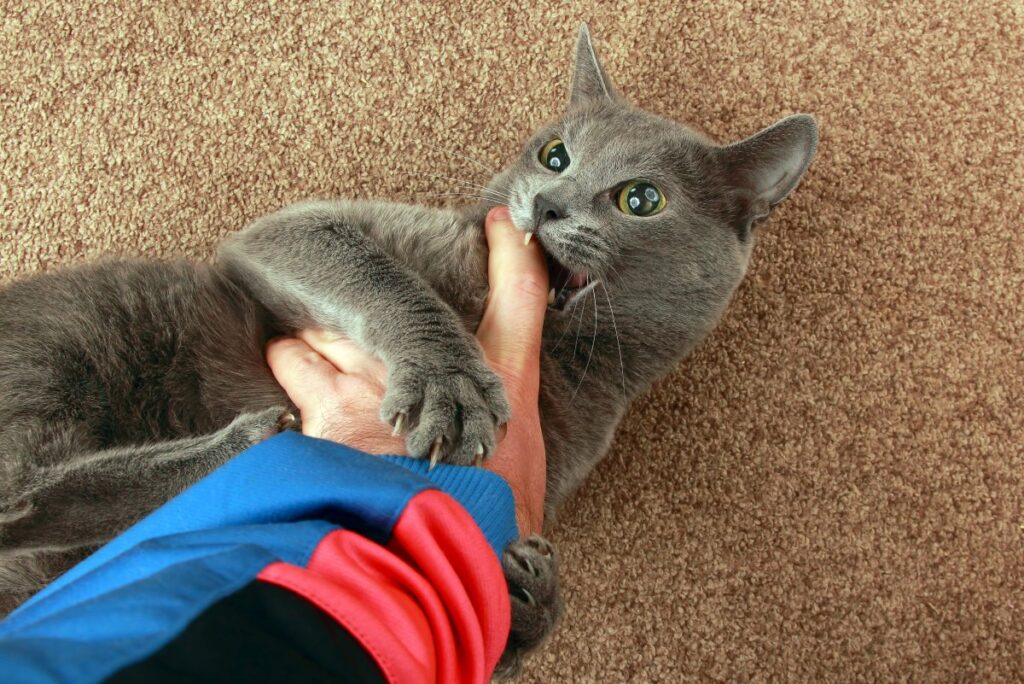
Secondly, the aggression will be on another level. A cat who is already aggressive and violent will take it up a notch. And for the cats, who are usually calm, will display another wild side that would disturb and seriously harm people around them.
Other animals are also at serious risk, which does not sound safe at all. Rabies in cats also causes drooling or foaming from the mouth as the muscles of the cat’s mouth become weaker, making it difficult for rabid cats to swallow food or keep their mouth shut.
Later Symptoms of Rabies
When rabies in cats prolongs, the later stages in this condition are a lot more serious. In the later stages, your cat will be unrecognizable to you as you will be disturbed to the core with this sudden change of dynamics between you and your cat.
Your cat will not let you or other people be there around it. Your cat will get agitated constantly, which will make it a lot more difficult to take care of them.
In the later stages of rabies in a cat, the cat will suffer from paralysis, which will affect its neck, chest, and head. The rabid cat will no longer be able to swallow food and make a sound. It will become tired and unable to move around if the treatment does not work or the cat is not vaccinated.
As the paralysis prolongs, the weakness in the body takes over the breathing muscle, and the cat will stop breathing, leading to its death.

It is understood that not every cat showcases all these symptoms. Some cases might be severe, while others might be mild. So it is not necessary for every case of rabies in a cat to undergo all these symptoms in a particular order.
Discussing the stages of rabies in cats starts with incubation, secondly prodrome; then there is an acute neurologic period, coma, and followed by death.
If left untreated, an unvaccinated cat with severe rabies will only have 7 days. Cats with rabies signs should be taken to the vet to ensure that the situation remains under control.
Transmission of Rabies to Humans
A rabid cat can pass on the virus to the pet owner. The transmission of rabies from a cat to a human is through contact with the rabid cat’s saliva. This transmission does not happen that easily; it is a little trickier than that. The saliva needs to be in contact with a broken skin patch, some infected area, or the mucus membrane.
In cases where your rabid cat licks you or you accidentally touch their saliva, you are not at risk of getting rabies. In rare cases, it is also possible for a human to get rabies if their cat scratches them, but it is very less likely to happen.

The major mode of transmission of rabies from cats to humans is through bites. If your rabid cat bites you, then you are in direct contact with the virus now. If you are vaccinated, though, chances are that the virus will not affect your body or immune system. But if you are unvaccinated, the stages might play a part in putting your health at risk.
It is strictly advised to consult your doctor or visit a hospital if you suspect you are exposed to rabies, to keep the situation under control before it is too late.
Those who are unvaccinated will need a series of vaccines to make sure they are immune to rabies. It will also keep the situation from worsening.
Treatment for Rabies
To start the treatment of rabies in cats, you need to diagnose rabies via a vet. It is not visible straight away, so it might take a while for you to realize that your cat is rabid. The incubation period suggests that the symptoms won’t show for weeks or even a year, making it especially difficult for the pet owner to treat their cat for rabies in time.
It is possible that during the incubation period, the cat’s saliva is not infectious, and the weakness is not visible in the cat. As of now, no test has been introduced to diagnose rabies in cats.
But once you take your cat to the vet, they will be able to tell you whether it is suffering from rabies or not. Once it is diagnosed with rabies, the vet will ask you to isolate your cat and observe the symptoms during this process.
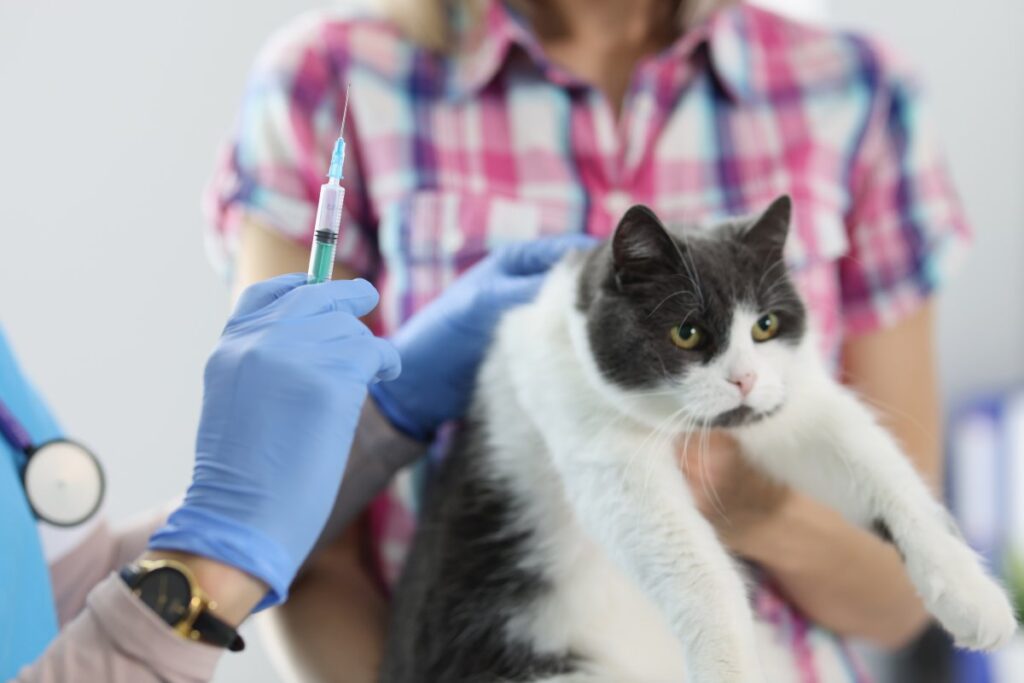
Booster shots have been proven to be effective when you are exposed to the virus; similarly, in this case, they will help your cat as well. Once your cat is infected, it is out of your hands and your vet’s hands. Now you need to wait and pray that your cat survives because it is only a matter of days once they are infected.
The only testing available for rabies is to take a piece of your cat’s brain and submit it for sampling and diagnostic tests, which can be done if your cat tragically passes away and you suspect that it had rabies.
You must make things easier for your cat and not let it suffer when suspected of being rabid. To ensure that things don’t get out of hand, you need to keep a thorough record of your pet cat’s vaccinations. Also, make sure you stay updated in case there is a new vaccine launched for a newly discovered disease.
How Does a Cat Get Rabies
It is very uncommon for indoor cats to get rabies, so it is mostly found in stray cats exposed to such viruses and violent behaviors. There are states in the United States that have deemed it mandatory for all cats, dogs, and other mammals to stay vaccinated so their health does not deteriorate due to the rabies virus.
As per reports, there has been a drastic decrease in cases of rabies in cats due to the awareness of rabies vaccines lately. This is why only 241 cases were reported annually for the year 2018. If your cat is in direct contact with wild animals or stray animals, they are more likely to be subjected to the risk of getting rabies.

As the common carriers are known to be the stray and the wild, the common means of transmission is to get bit by any wild animals or a carrier roaming around the streets in the neighborhood. Wild animals such as raccoons, bats, and foxes are the most common rabies carriers for cats.
Vaccination for Rabies
To ensure that your cat’s health does not deteriorate, you take matters into your own hands and ensure that your cat is vaccinated. Some laws have been passed to minimize the cases of rabies in cats.
It is made mandatory for you to get your cat vaccinated and stay up to date on the vaccination. The perfect age to get vaccinated for kittens is to get it done in the first year of their life. The next vaccination shot is due in one year to three years. It will remain effective for at least a year.
As everyone knows, if your cat is diagnosed with rabies, they will die. To make sure that this does not happen, the only way to save them is to get them vaccinated; otherwise, you don’t stand a chance against the virus because there is no known cure for it.
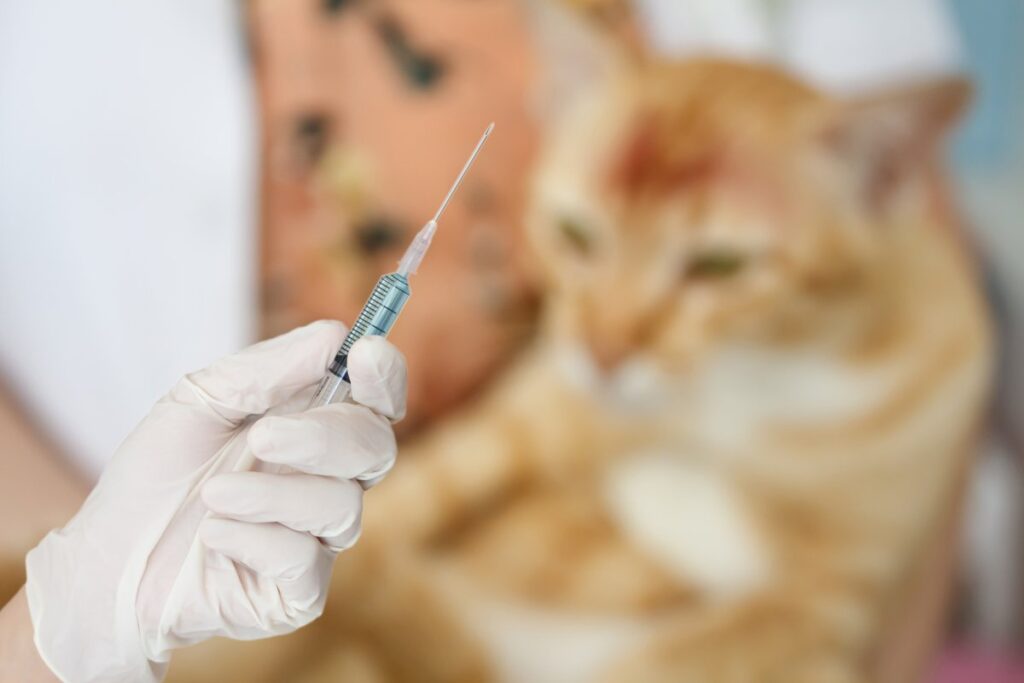
After a year of the first dose as a kitten, the next doses have intervals of one to three years in between them. So make sure that your cat stays vaccinated and be cautious of rabies in cats, which can take a toll on your cat’s health and even your own health as the cat’s owner.
Those of you who raise the question, “Should unvaccinated cats be around vaccinated cats?” the answer to that is NO because the vaccinated cats might be carriers for some virus that they are immune to. The same cannot be said for the unvaccinated ones because they stand no chance if things go south.
Conclusion
All in all, here is hoping to have answered all your questions about rabies in cats and related subjects. The key takeaway from this article is to make sure that you get your cat vaccinated to keep it safe, as well as other people and animals around it.
It is because vaccinations make sure that you steer clear of infectious or viral diseases. It should be done in the first few weeks of adopting or taking in a kitten.

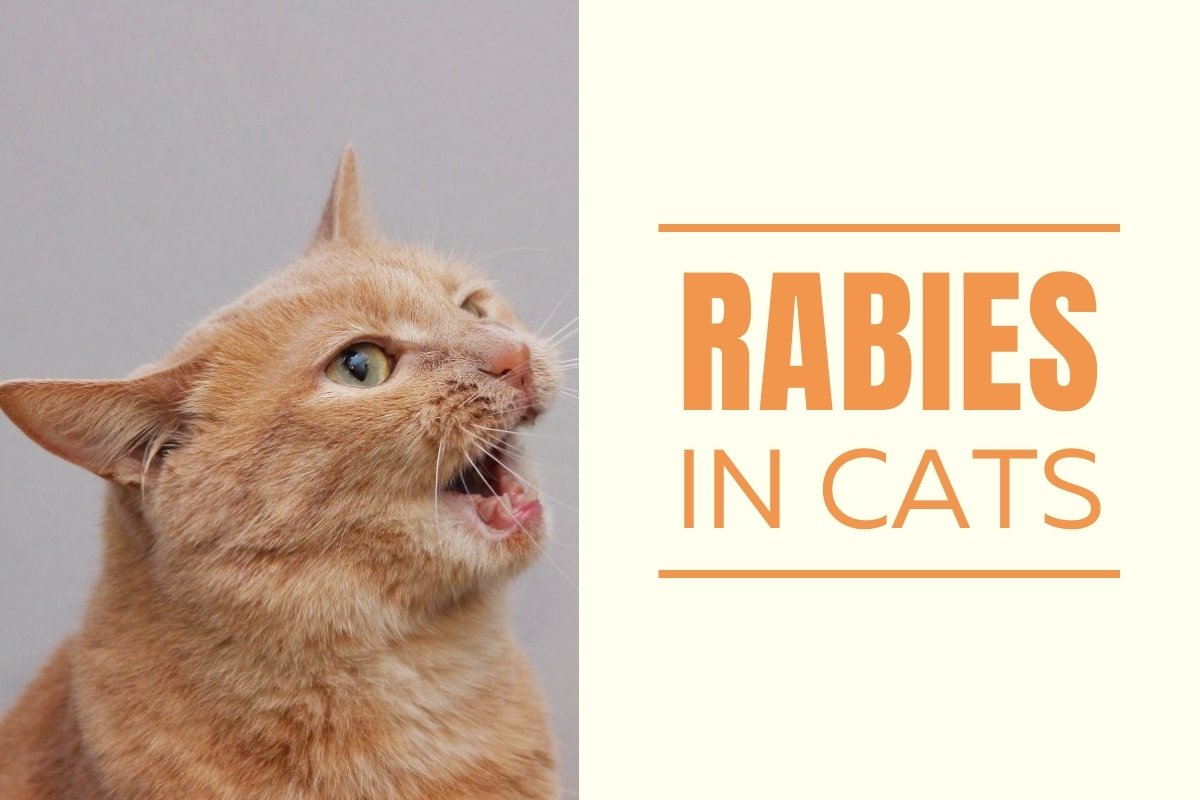



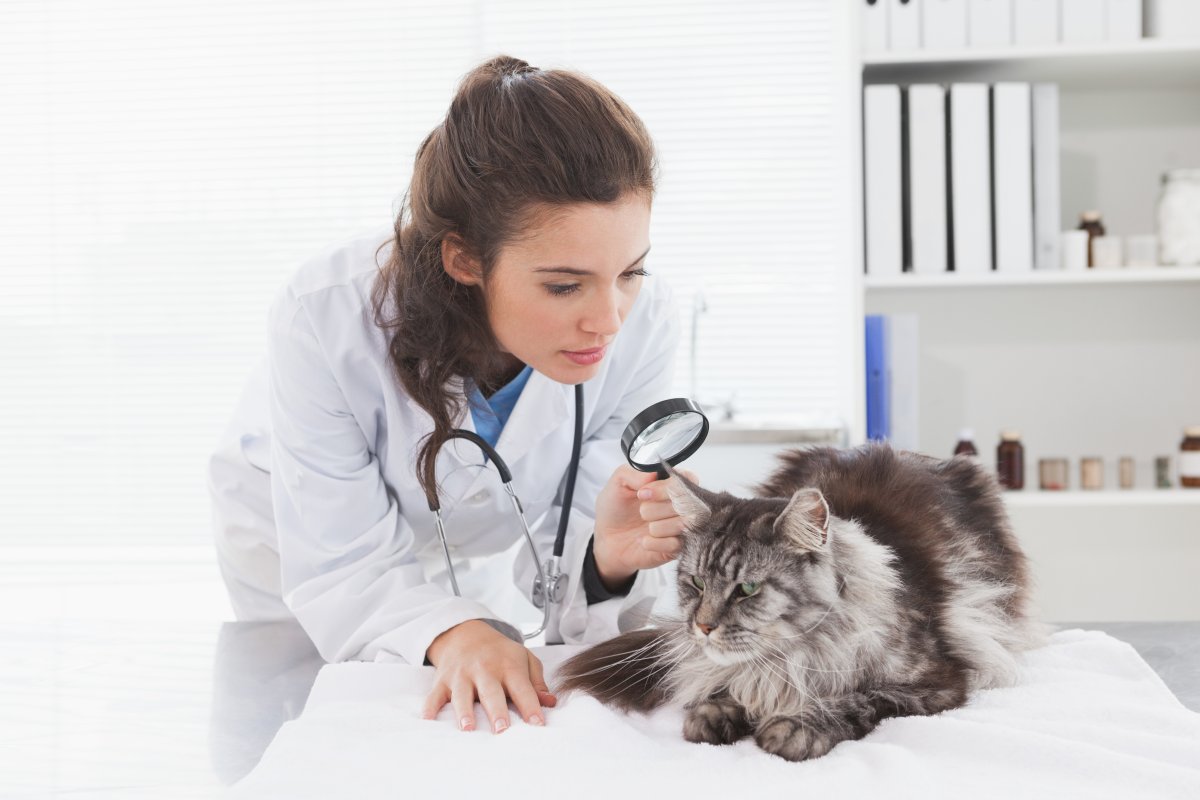


2 comments